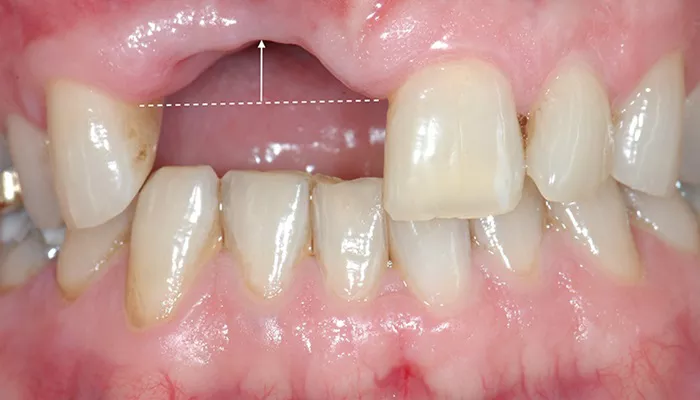Periodontal disease, also known as gum disease, is a common oral health issue that affects many people worldwide. It is an inflammation or degeneration of the tissues surrounding and supporting the teeth, typically caused by plaque buildup. If left untreated, periodontal disease can progress from gingivitis (mild gum inflammation) to periodontitis (severe gum disease that affects the bone and supporting structures of the teeth). While surgery is an option for treating periodontal disease in some cases, many patients can effectively manage and even reverse their condition without resorting to surgical intervention. This guide will provide a detailed, professional perspective on treating periodontal disease without surgery, complete with subtitles and presented in an easy-to-understand, popular science style.
Understanding Periodontal Disease
Periodontal disease is initiated by plaque, a sticky film of bacteria that forms on teeth and gums. When plaque is not removed through regular brushing and flossing, it can harden into tartar, which is difficult to remove and irritates the gums.
This irritation leads to inflammation, known as gingivitis. If gingivitis is not treated, it can progress to periodontitis, where the inflammation spreads to the deeper tissues of the gum, affecting the bone and ligaments that support the teeth.
Non-Surgical Treatment Options
The good news is that periodontal disease can often be managed and even reversed with non-surgical treatments. These treatments focus on reducing inflammation, removing plaque and tartar, and promoting healing. Here are some of the most common non-surgical treatment options:
1. Scaling and Root Planing
Scaling and root planing is a deep-cleaning procedure that removes plaque and tartar from the teeth and roots. It is typically performed by a dental hygienist or periodontist using hand instruments or ultrasonic scalers. During scaling, the dentist or hygienist removes plaque and tartar from above and below the gum line. Root planing involves smoothing the root surfaces to remove any bacteria and promote healing. This procedure can help reduce inflammation and slow the progression of periodontal disease.
2. Professional Dental Cleanings
Regular dental cleanings are crucial for maintaining oral health and preventing periodontal disease. During a professional dental cleaning, the dentist or hygienist will remove plaque and tartar from the teeth and gums using hand instruments, ultrasonic scalers, and water irrigation. They will also polish the teeth to remove surface stains and smooth the enamel, making it harder for plaque to stick. Professional cleanings should be performed every six months or as recommended by your dentist.
3. Medications
Medications can play a role in managing periodontal disease. Antibiotics can be prescribed to kill bacteria and reduce inflammation. In some cases, a medication called a periodontal pocket irrigant may be used to clean out deep pockets between teeth and gums. This irrigant can contain antibiotics, antiseptics, or other ingredients that help fight infection.
4. Laser Therapy
Laser therapy is a newer treatment option for periodontal disease. Lasers can be used to kill bacteria, remove plaque and tartar, and promote healing. This treatment is less invasive than traditional surgery and may require fewer visits to the dentist. Laser therapy can be particularly effective for patients with mild to moderate periodontal disease.
Lifestyle and Home Care
In addition to professional treatments, lifestyle and home care play a vital role in managing periodontal disease. Here are some tips for maintaining oral health and preventing periodontal disease:
1. Brush and Floss Daily
Brushing and flossing are the foundation of oral hygiene. Brush your teeth at least twice a day with a fluoride toothpaste, and floss daily to remove plaque and food particles stuck between teeth and under the gum line. Use a soft-bristled toothbrush to avoid damaging your gums.
2. Eat a Healthy Diet
A balanced diet rich in vitamins and minerals can help support oral health. Avoid sugary snacks and drinks, which can feed bacteria and contribute to plaque buildup. Instead, choose foods that are good for your teeth and gums, such as leafy greens, dairy products, and nuts.
3. Quit Smoking
Smoking is a major risk factor for periodontal disease. If you smoke, quitting can improve your oral health and reduce your risk of developing gum disease. Quitting smoking can also help improve the effectiveness of non-surgical treatments for periodontal disease.
4. Manage Stress
Stress can contribute to inflammation and weaken the immune system, making it harder to fight off infection. Practice stress-reducing techniques such as meditation, yoga, or deep-breathing exercises to help manage stress and support oral health.
Conclusion
Periodontal disease is a common oral health issue that can affect anyone, but it doesn’t necessarily require surgical treatment. With a combination of professional treatments, lifestyle changes, and good home care, many patients can effectively manage and even reverse their condition without resorting to surgery. Scaling and root planing, professional dental cleanings, medications, and laser therapy are all effective non-surgical treatment options. By making smart choices about diet, quitting smoking, and managing stress, patients can further support their oral health and reduce their risk of developing gum disease. Remember, the key to treating periodontal disease without surgery is early detection and consistent management. Regular dental check-ups and cleanings are essential for maintaining oral health and catching problems before they become severe.
Related topics:

